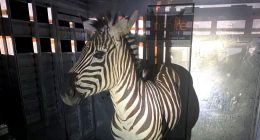From cameras that mimic homeless bees to extremely cute chicks, it’s an honour to see these sights – but be prepared to witness humanity’s awful consequences for wildlife
Sitting at home, breath held, earnestly hoping that some tiny animal thousands of miles from your sofa can survive a life-or-death situation: it’s always been one of the eerie pleasures of a wildlife documentary, despite such a reaction being essentially irrational. What does it matter whether that lizard can outrun those snakes? It’s all part of nature. It’s nothing to do with us.
Well, not any more. The scene that sticks in the mind from Our Planet II, Netflix’s new Attenborough-voiced opus, is of an albatross chick on the tiny Pacific island of Laysan, fighting for life without any predators nearby. The little thing’s opening its beak wide and dry-heaving towards the sand. “There is now so much plastic in our oceans that it reaches the most remote islands on Earth,” says Sir David, as we see the beach strewn with incongruously colourful detritus. The peril the chick is trying to survive is whether or not it can sick up a gobbet of indestructible crud its mother mistook for food.



